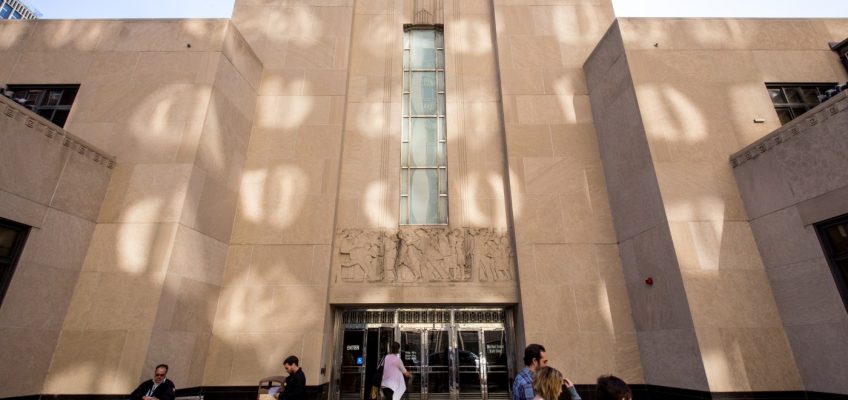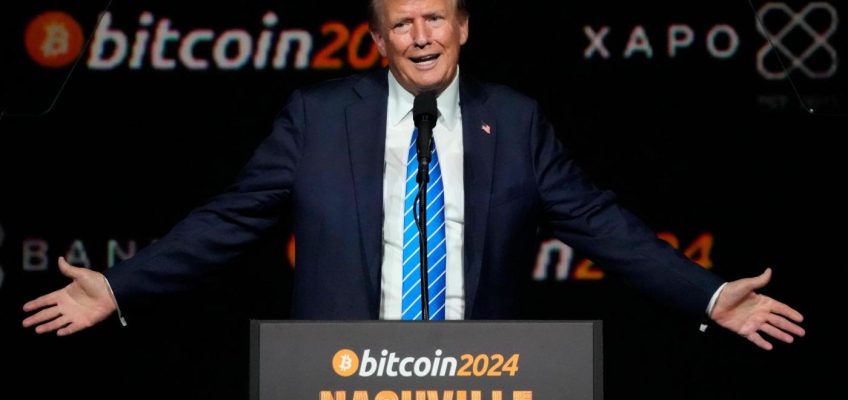Social Security in the crosshairs: We won’t take this lying down
For years we seniors have coasted along, feeling secure that no one would dare mess with our Social Security and Medicare. Those programs were dubbed the “third rail” (anyone who touched them would be dead in the political water). Well, folks, we are no longer secure.
House Republicans recently passed a “budget blueprint” that plans to cut hundreds of billions from the agency overseeing Medicare and Medicaid. But Social Security is also in the crosshairs. Elon Musk has called Social Security a Ponzi scheme.
The government is shutting down 47 branch Social Security offices and six regional offices — while at the same time people will no longer be able to verify their identity over the phone, and so many more will need to visit an office in person. The Social Security Administration has been ordered to fire 7,000 of its staff, even though they were already short-staffed and dealing with huge backlogs.
Social Security has never missed a payment in nearly 90 years. But incredibly, Trump’s Commerce Secretary Lutnick (net worth of $2+ billion) stated that if S.S. recipients didn’t get their checks one month, to most people it would be no big deal and they wouldn’t complain (as they “trust government”). Lutnick said that Musk knows the “easiest way to find the fraudster is to stop payments and listen … Whoever screams is the one stealing.”
Forty percent of seniors living alone depend entirely on Social Security for their livelihood. This is how alarmingly out of touch this administration is.
When Musk and his muskrats (DOGE) demanded unfettered access to our personal Social Security information (which includes S.S. numbers, medical records, bank accounts, tax information, earnings history, birth/marriage records, employment information and more), a judge issued a Temporary Restraining Order. In retaliation, the Trump-appointed SSA acting director threatened to shut down the entire system.
For decades the agency has been begging Congress for funds to update their IT system. Now staff cuts have already led to outages. Former SSA commissioner Martin O’Malley recently stated, “Ultimately, you’re going to see the system collapse and an interruption of benefits. I believe you will see that within the next 30 to 90 days.”
There are over 73 million of us. We will not take this lying down. Demand of your elected officials that our earned benefits be protected. Oh, and about that third rail? They can ride Musk out of town on it.
Carol Turnbull, Woodbury
Digging
Tim Walz doesn’t get it. He continues digging himself a hole every time he speaks or goes on a podcast, even though I personally enjoy it.
Bobby Reardon, Pelican Lake Township
What we get from politicians who are for sale
Almost daily a Republican will brand Democrats as far-left Marxists or radical liberals responsible for all of society’s ills, tand here’s little response from a Democratic Party once proud of liberalism. Regardless of which party has been in charge, conservatism rules without accountability — over 40 years of policies that make sure the rich get richer. For 40 years we’ve heard how tax cuts for the 1 percent will create great jobs, the rest of us get the bill but not so great jobs. Ever hear Donald Trump boast about the wonderful jobs he’s created?
What’s worse, this Republican Party’s brand of conservatism brought us to an America that’s lost its soul, lost its ideals and credibility on the world stage. It’s brought us to Trump, again. They knew he couldn’t be bothered with honesty, ethics and morals or laws and the Constitution. He said he’d only be a dictator for one day but he loves it, said he didn’t know anything about Project 2025, now it’s his bible. For over 40 years conservatives have blasted government as an enemy. Trump accuses programs he doesn’t like of fraud and corruption, he would know both up close and personal. If there is fraud, who is being prosecuted? No program especially those that serve the common good is safe from being gutted, that includes Social Security and Medicare. Day by day it becomes clearer that Trump and his band of billionaires cannot be trusted.
Debate over size and function of government is legitimate but for every problem in government, there’s more, a lot more, that government does that’s good. Government isn’t the evil but the political system surely is. Fraud and corruption do exist but they’re found in the White House and halls of Congress. Politicians for sale gave us an economy for the few instead of the many. A political system controlled by big money is clearly in need of reform. It’s a system that does not represent us all.
Thomas L. Lenczowski, Mendota Heights
Bolshevik brainwashing
Several writers recently treated TDS (“Trump Derangement Syndrome“) lightly. It, however, appears to be quite widespread. I work with several area groups. Some days after the November 2024 selection, a member of one of those groups quietly entered and sat down at a place at a table. After a few moments they looked across the table and, in somewhat hushed tones stated, “We will be OK, won’t we?”
Some months later another person was sitting at their table, visibly agitated, and then stated that they had been calling their bank every day to assure that their money was still in there — that Musk was going to take it.
A statistician would say that two people is not evidence of an epidemic. But this is out of a group (sample size) of 8 or 10. Maybe we should call it what it is –1917 Bolshevik Brainwashing by their party and their media. And yes, it works. And apparently it traumatizes people. I really felt sad that they had experienced such public mental abuse.
Art Thell, West St. Paul
Frustrated by process to select a new DFL chair
Ken Martin was elected chair of the Democratic National Committee on February 1. Less than an hour later, Tim Walz endorsed his deputy chief of staff, Richard Carlbom, to become DFL chair.
It’s no secret Tim Walz has an interest in running for president; he’s said so himself. The issue is that his deputy chief of staff would have wide control over DFL party resources as chair. Resources that could easily be given to Tim Walz when they would normally be given to our local candidates.
Many people have expressed their frustration with the process to replace Ken Martin. I would know, I’m running for DFL chair myself. A lot of people I’ve spoken with have privately said they worry Richard Carlbom cares more about Tim Walz’s political future than the futures of local candidates. We need a chair committed to all of Minnesota, not just one man.
Jack Lindsay, Eden Prairie
‘Domestic terrorism’
Since when is storming and vandalizing the United States Capitol building not considered domestic terrorism while spray painting a Tesla is?
John Wood, St. Paul
Remember the Cold War saying
It is good talks are happening about a cease fire. But in dealing with Putin, it reminds me of the old Cold War saying about the Russians, they would say, “what is mine is mine and what is yours we will negotiate.”
In the end, it very hard to take President Trump seriously when he said Ukraine invaded Russia. Trump’s supporters will say, “oh he is just being Trump” or “he is sly like a fox”, only history will tell for sure. This is a serious business. People are suffering and dying in Ukraine because of the Russian invasion, and this increased because of by the temporary cut off of intelligence and aid, the canceling of USAID programs and the reduction of support by this president. This should be black and white to everyone, not just those of us who have relatives in Ukraine.
Paul Malamen, Eagan
It’s not a crisis
I strongly object to the St. Paul mayor’s take on the City Council supporting the Fort Road Federation/District 9 Community Council’s appeal that took issue with city zoning administrator and planning commission findings. With the city’s legal team at her side, Councilwoman Noecker’s carefully reasoned and elegant rationale, that the council unanimously approved, was based upon a number of factors, not just the interpretation of a public works yard.
The mayor has ignored decades of (local) community input on the care for our environment and possibilities for both commercial and transit viability, specifically for our beautiful river corridor. He also ignored the testimony of his constituents that objected not only to what would have been its impending destruction, but also the potential loss of residential property tax income. A number of alternative sites could have been considered, and what is worse our community was given a fait accompli, specifically excluded from decision-making on locating this garbage-truck dispatch center. The mayor has fabricated a “crisis” where none exists: an alternative dispatch center already is in operation and will be for expanded service. I would like to encourage the mayor and his staff to read his citizens’ testimonies, even join us in a conversation on the issues we presented.
Jos F Landsberger, St. Paul
Checks
Where are the checks and balances so President Trump doesn’t become King Donald?
Thomas Good, Woodbury
What leaders who respect democracy do
Leaders who respect democracy follow laws. For the sake of a functioning nation, they respect established due process. If an agency or office was established by the legislature, they recognize its currency and work through the legislature to change or dismantle it.
Leaders who respect democracy respect the courts. The leaders certainly can raise legal challenges, but they abide by court decisions and neither flout rulings nor attack judges who rule against them. The statement by Chief Justice Roberts means that leaders who respect democracy appeal rulings they find disagreeable to higher courts.
Leaders who respect democracy do not fire, incarcerate or deport (“disappear”) individuals without due process. Innocent until proven guilty is a cornerstone of democracy.
Leaders who respect democracy do not attack with vitriol and seek to suppress critics of their policies, whether individuals, private companies, news agencies, government offices (such as of Inspectors General), other government branches, or countries.
Leaders who do not respect democracy are fascists, authoritarians, dictators, virtual mega crime bosses — choose your term. If such labels don’t move you, these leaders are cruel.
My question is, do we as a people want to kowtow to cruelty?
Dan Gartrell, St Paul
Replace the word ‘deporting’
Let’s be absolutely 100% clear here: President Donald Trump and Department of Homeland Security Secretary Kristi Noem aren’t simply deporting the “bad hombres” who entered the United States without authorization as they would like us to believe. They are actually creating a class of undocumented immigrants by removing the legal status of hundreds of thousands of people who were lawfully admitted into the United States and then calling for their removal.
Think about the difference here, folks, because it truly matters.
Those who entered the United States lawfully under parole programs for Cubans, Haitians, Nicaraguans and Venezuelans did so with U.S. sponsors, proper vetting and prior permission from the U.S. government to fly to and be lawfully admitted into the United States. In other words, they followed all proper channels and procedures, violated no laws to get here and committed no crimes since their arrival.
Nevertheless, the administration ruthlessly and at the end of the day on Friday — a cowardly tactic many of us immigration lawyers got used to during Trump’s first administration — announced it will revoke that legal status and commence removal proceedings against those who do not “self deport.”
Make no mistake. When you hear that “Trump is deporting hundreds of thousands of illegal aliens,” replace the word “deporting” with the word “creating.” That more accurately describes the situation.
John Medeiros, Richfield. The writer is an immigration lawyer.
Letters: Instead of good governance, we get stunts, drama and lawsuits in St. Paul
Allen seeks Ward 4 seat; Hamline-Midway Coalition disavows Hanson campaign
Twin Cities restaurateur David Burley dies in motorcycle accident
Rob Clapp: I’m invested in St. Paul. Work with me, city officials
Rent control, budget, acrimony, attendance issues dog St. Paul City Council




